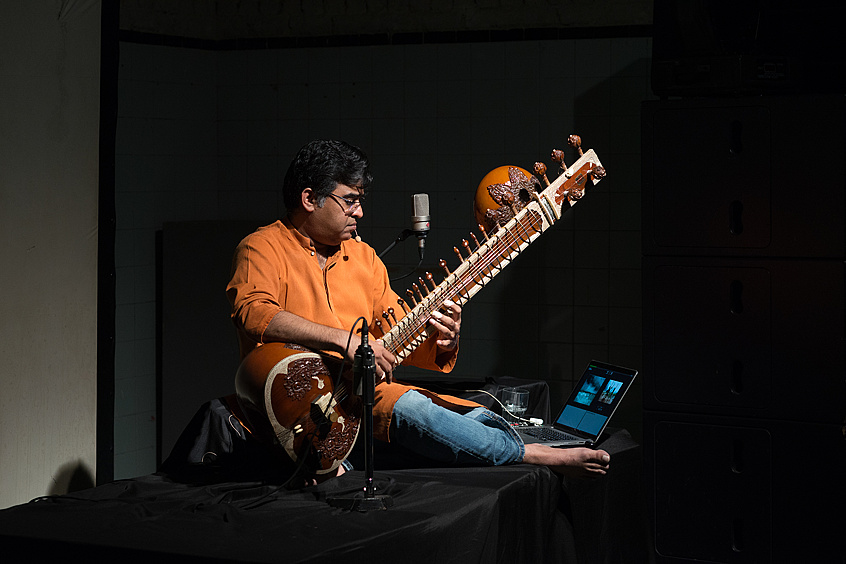In his novel Ada, or Ardor (1969), Vladimir Nabokov writes, “Maybe the only thing that hints at a sense of Time is rhythm; not the recurrent beats of the rhythm but the gap between two such beats, the gray gap between black beats: the Tender Interval.” Lala Rukh’s drawings and print-based works operate in this realm of timekeeping, their visual terrains mapped by rhythm. She occupies the interval between two wave patterns, following the subtle transformations of moonlight, sand gradients, and archaeological topography while also pursuing the lines of dissent in street protests and across the women’s movement.
Born in Lahore in 1948, Lala has for decades been an active member of the Women’s Action Forum (WAF)—one of South Asia’s most significant platforms for women’s rights and feminisms of the Global South—and her studio practice and role as an educator has consistently expanded into the public domain. The visual elements that accrue on her page are often particle-sized, yet they transact on multiple scales. By drawing spaces she charts horizons, drifting between sight and nonsight, expansion and restraint, and Lala’s pared-down vocabulary seems almost to have its own agency, often exposing a hidden choreography of ciphers in her scores. This is her own language, a constellation of calligraphic form, minimalism, and symbolic writing.
Lala developed a notational system through her training in Islamic calligraphy and her close involvement with musical traditions from across the Indian subcontinent. Of particular importance is her participation in following and archiving the All Pakistan Music Conference, initiated by the artist’s father, Hayat Ahmad Khan, in 1959. Lala’s drawings reflect the live quality of performed music, indexing sonic ruptures and melodic sequences as a graphic sensibility. Her current works look to build a stop-motion animation upon the percussive scheme of a Hindustani classical taal called rupak, which has a seven-beat structure. Drawing turns into movement, rendering the expansion of the beat in time, and creating a diagrammatic visual relationship with the pulsation of an instrument.
—Natasha Ginwala



